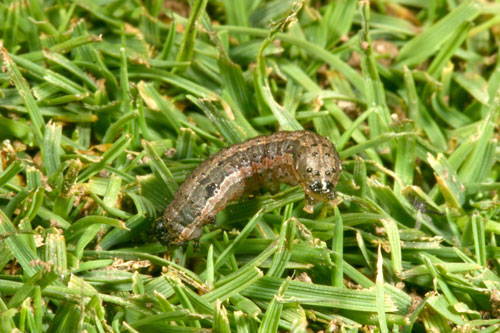10/1/2021
Fall Armyworm Outbreaks
JC Chong

This has been a year of fall armyworm outbreaks in several states. My colleagues in Georgia, Maryland, North Carolina, Ohio and other states had sent out alerts about severe outbreaks. It even caught the attention of national news outlets.
This year’s outbreak is certainly one of the worst I’ve seen in South Carolina in the past five years. It happened earlier than usual, deteriorated fast and has been very damaging. Grass was just gone almost overnight!
Did early September storms make fall armyworm infestations worse across the Northeast and Midwest because the pest was pushed north by storms, as reported by CBS based on the blog by Dave “the Bug Doc” Shetlar, Joe Boggs and Curtis Young? There’s truth to that.
Armyworm is similar to the tobacco budworm, which cannot survive the harsh winter in the North, where infestations in the North have to be initiated by moths migrating from the South every year. They maintain permanent populations in southern Florida, southern Texas and countries south of the land and sea borders. They slowly migrate north as summer progresses and temperatures rise. The northward migration is sped up and infestation made worse when lots of adult moths are picked up by storms and carried north.
Long-distance movement and migration isn't enough—serious outbreaks also depend on one condition: the population has to do well in the South so that many moths are available to move north on their own or by catching a ride on storm fronts. Recent hot and wet months in the South mean plenty of grasses for the fall armyworms to munch on, get fat and strong, and build up a huge population.
Can I say this is a perfect storm? GP